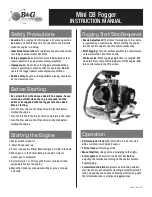
40
Signal Generation
❙
TIMING SETUP:
Use the soft menu key BIT TIME to set the time at which
you would like each sample to be applied. The time is
identical for all samples. The configurable
PERIOD applies
to the entire pattern and is calculated by its length
multiplied by its bit time (time of a sample). If the BURST
function is activated (ON), the instrument will pause after
each issued pattern for the duration of the IDLE TIME.
Only then will the pattern be issued again. Setting the
N-CYCLE option enables the user to issue the pattern
precisely <n> times. The sample time can be set from
20 ns to 42 s in increments of 10 ns. It will be implemented
by means of a 32 bit counter. The IDLE TIME between the
patterns can be set from 20 ns to 42 s in increments of
10 ns. It will also be implemented by means of a 32 bit
counter. Use the universal knob or the KEYPAD key in the
CURSOR/MENU control panel to enter the values.
❙
SAVE/RECALL:
The manually created pattern can be saved or recalled via
soft menu SAVE or RECALL. The pattern can be stored
internally or externally on a connected USB stick. The
pattern and the time settings will be saved.
❙
ARB . TRIGGER:
The soft menu key ARB. TRIGGER makes three possible
trigger functions available. The CONT. option (continuous
trigger) issues the pattern continuously. If the BURST
function is activated, only the IDLE TIME is applied
between the patterns. The N-CYCLE setting is voided by
the continuous output. For the EXT. (external trigger)
setting, the pattern is issued by an edge at the external
input of the oscilloscope (TRIG. EXT.). If the BURST
function is activated, the pattern will be issued <n>
times (see N-CYCLE). In addition, you are able to
determine the direction of the triggering edge. If BOTH is
selected as slope direction, both edges are of equal
value. The first edge triggers the pattern. The edges do
not alternate. If the MAN. setting is activated, the pattern
is issued manually by pressing the respective key. If the
BURST function is activated, IDLE TIME and N-CYCLE
apply.
Fig. 10.2: Arbitrary pattern setup
10 .2 .4 Manual
In the manual pattern mode, the modes of the individual
pins S0 to S3 are wired separately. Each pin is assigned
to a specific soft menu key and the condition HIGH (H) or
LOW (L) is selected.
10 .2 .5 BUS Signal Source
Use the pattern generator connectors on the front panel of
the instrument to generate the following BUS signals (for
measurements without measurement object), depending
on the setting:
❙
SPI
: Data rate 100 kBit/s, 250 kBit/s or 1 MBit/s
❙
I
2
C
: Data rate 100 kBit/s, 400 kBit/s, 1 MBit/s or 3.4 MBit/s
❙
UART
: Data rate 9600 Bit/s, 115.2 kBit/s and 1 MBit/s
❙
CAN
: up to 50 MBit/s
❙
LIN
: up to 50 MBit/s
The contact at the upper left is always ground and the
signal levels are about 1 V. The following table shows how
the four outputs S1, S2, S3 and
are used, depending on
the signal.
Signal
S1
S2
S3
S0/
SPI
Clock
MOSI
MISO
Chip Select
I
2
C
Data SDA
no signal
no signal
Clock SCL
UART
RX
no signal
no signal
TX
CAN
CAN L
no signal
no signal
CAN H
LIN
Low
no signal
no signal
High
An information box is displayed for each operating mode,
displaying the corresponding connector assignment. By
pressing the respective soft menu key, you can open a
submenu with the bit rate setting of the selected operating
mode.
In the SAVE/RECALL menu you can load via soft menu
DEVICE SETTINGS and the soft menu key LOAD prede-
fined SPI/SSPI, I
2
C, UART, CAN and LIN BUS signal source
configuration files from internal memory.
The signals of the BUS signal source are pseudo random pattern
and are not adaptable. Only the BUS type and the data rate can
be selected.
Tab. 10.3: Pin assignment of the BUS signal source
















































